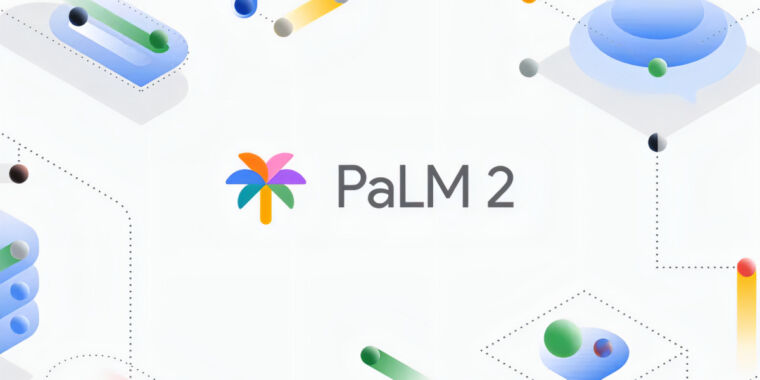Google Translate just nearly doubled its number of supported languages
Large language models —
This includes common languages like Cantonese and lesser-known ones like Manx.

Enlarge / The logo for PaLM 2, a Google large language model.
Google announced today that it has added support for 110 new languages to Google Translate, nearly doubling the number of languages that can be translated.
The company used the PaLM 2 large language model to facilitate these additions.
In a blog post, Google Senior Software Engineer Isaac Caswell claimed that the newly added languages are spoken by more than 614 million people, or about 8 percent of the global population.
He noted that about a quarter of the languages originate in Africa, “representing our largest expansion of African languages to date.”
The blog post also went into some light detail about Google’s philosophy for choosing languages and for deciding which dialects to support:
Languages have an immense amount of variation: regional varieties, dialects, different spelling standards. In fact, many languages have no one standard form, so it’s impossible to pick a “right” variety. Our approach has been to prioritize the most commonly used varieties of each language. For example, Romani is a language that has many dialects all throughout Europe. Our models produce text that is closest to Southern Vlax Romani, a commonly used variety online. But it also mixes in elements from others, like Northern Vlax and Balkan Romani.
This update brings the total number of languages supported by Google Translate to 243, which is just the beginning of its publicized initiative to ultimately support 1,000 languages through the use of AI. You can see the full list of languages added in a help page published by Google.
By contrast, Apple Translate supports 21 languages, though that number includes both US and UK English as distinct options. Apple recently announced plans to add Hindi to its Translate app. Of course, Apple and Google take very different approaches to—and have different levels of investment in—these tools.
Google Translate just nearly doubled its number of supported languages Read More »
